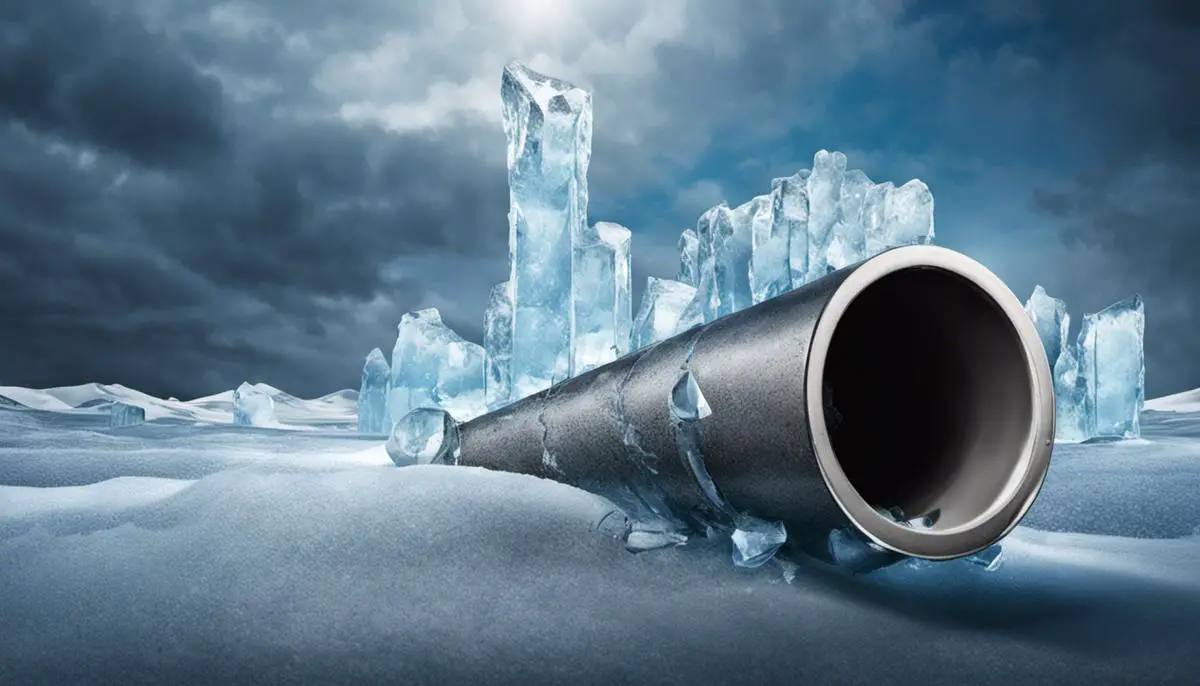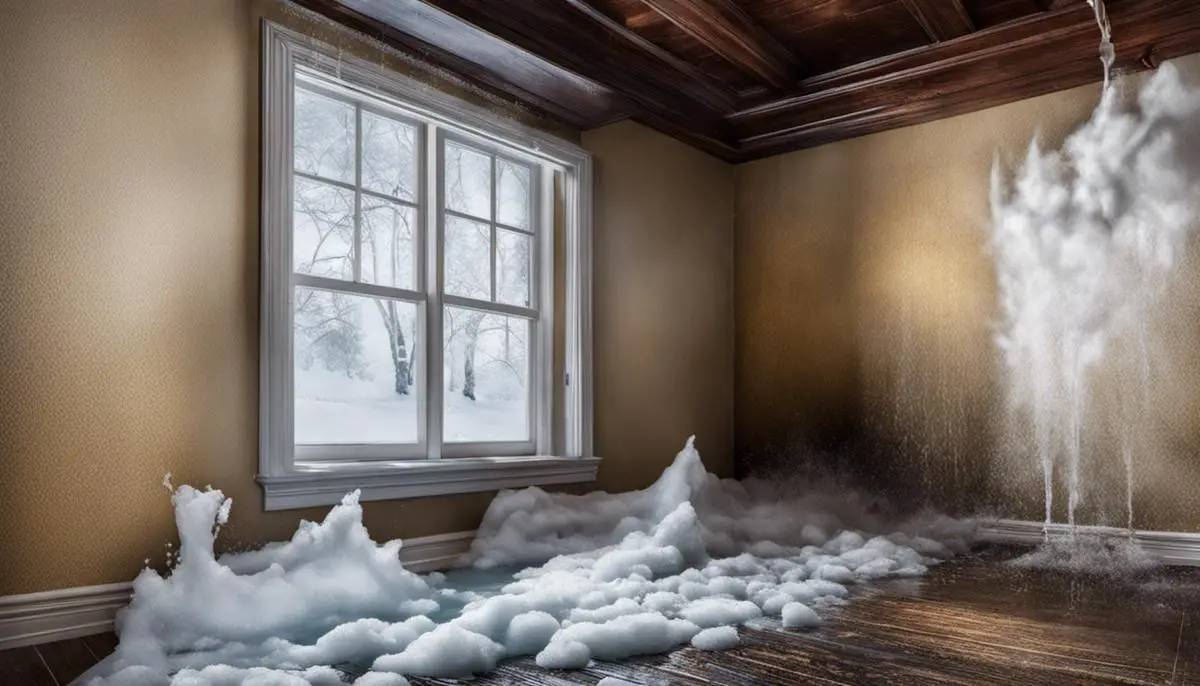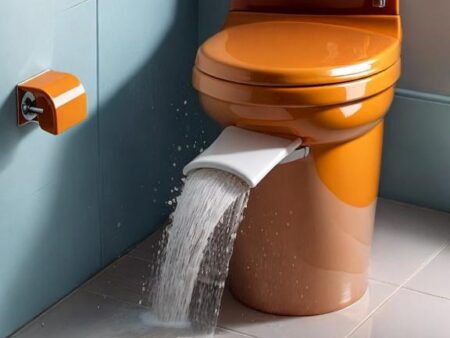Plumbing is the lifeblood of a house, connecting various sections and providing an efficient flow of water.
One key part of this system is the toilet pipes, which, if overlooked, can cause considerable damage, especially in freezing conditions.
Many homeowners are often caught unawares by this seemingly trivial matter, leading to drastic consequences.
However, understanding the fundamental conditions under which toilet pipes can freeze can empower every homeowner to take proactive measures to prevent or tackle frozen pipes.
This comprehensive guide delves into the basic understanding of the conditions that can trigger toilet pipes to freeze, the type of damage they can cause, ways to prevent such an occurrence, and how to thaw them if they freeze.
Additionally, we have compiled a list of frequently asked questions to further clarify the issue of frozen toilet pipes.
Table of Contents
- Can Toilet Pipes Freeze In Winter?
- Uncovering the Factors That Cause Pipes to Freeze
- The Potential Damage of Frozen Toilet Pipes
- Preventing and Thawing Frozen Toilet Pipes
- Frequently Asked Questions about Frozen Toilet Pipes
Can Toilet Pipes Freeze In Winter?

Toilet pipes can freeze in cold weather, especially if they are not properly insulated. Freezing can lead to blockages and potentially burst pipes, causing damage and plumbing issues. Insulating pipes and keeping the bathroom warm can help prevent freezing. Regular maintenance is crucial to avoid this problem.
Uncovering the Factors That Cause Pipes to Freeze
| Factor | Description |
|---|---|
| Low Temperature | Freezing occurs when temperatures drop below 32°F (0°C). |
| Insufficient Insulation | Poor insulation allows cold air to reach the pipes. |
| Exposed Pipes | Pipes in unheated areas or against exterior walls freeze easily. |
| Wind Chill | Wind can intensify the cold, increasing freezing risk. |
| Lack of Heating | Inadequate heating in a space may lead to frozen pipes. |
| Water Flow | Slow-moving water is more prone to freezing. |
| Cracks or Leaks | Gaps in pipes can expose them to freezing conditions. |
| Neglected Maintenance | Lack of upkeep can make pipes more vulnerable to freezing. |
Understanding the Freezing of Toilet Pipes
Temperature plays a significant role in the freezing of your toilet pipes. When the temperature falls below 32 degrees Fahrenheit, water inside pipes can turn to ice and result in blockage.
This freezing not only obstructs the water flow but also causes significant damage, as the frozen water expands and exerts pressure on the pipe walls, potentially resulting in cracks or breaks.
Factors that Influence Toilet Pipes to Freeze
Various factors can influence the freezing of toilet pipes, some of which have nothing to do with the temperature.
The material used in making the pipe and its insulating properties directly affect its vulnerability to freezing.
For instance, copper pipes are more prone to freezing as compared to plastic ones due to the differences in thermal conductivity. A well-insulated pipe will also take much longer to freeze than an uninsulated pipe.
The pipe’s location in the home also affects the chances of its freezing. Pipes located in uninsulated exterior walls, attics, or basements are more prone to freezing due to their exposure to lower temperatures.
Similarly, pipes running through crawl spaces or outside can freeze quicker due to less buffering from indoor heating.
Prevention of Toilet Pipes Freezing
There are various strategies to keep your toilet pipes from freezing. One standout method is to insulate the pipes using resilient materials like foam rubber or fiberglass sleeves. These materials provide superior insulation due to their high R-values.
Keeping your house uniformly warm, especially neglected areas like the basement or attic, can also help in averting frozen pipes.
Further tactics include slightly opening faucets during extreme cold to maintain water flow and mitigate the chances of freezing. Likewise, keeping cabinet doors under sinks open during frosty months enhances warm airflow around pipes, reducing the likelihood of freezing.

The Potential Damage of Frozen Toilet Pipes
The Mechanism of Toilet Pipes Freezing
Freezing can inflict damage to your toilet pipes due to the expanding nature of water.
When water freezes, it swells. In turn, water confined within your toilet pipes also expands, forcing the pipe to stretch beyond its limits. Regrettably, the majority of domestic plumbing pipes, including toilet pipes, aren’t engineered to withstand such expansion or contraction.
This abnormal stretching may cause the pipes to fracture. If the freezing persists and the water pressure escalates, these fractures could widen, hence increasing the risk of the pipe bursting.
Potential Damage Resulting from Frozen Toilet Pipes
The potential fallout from a burst toilet pipe due to freezing extends beyond a malfunctioning toilet.
When the frozen pipe finally bursts, it releases a torrent of water. If the failure occurs when no one is home or during the night, this can result in substantial water damage to your property.
This damage may affect your walls, floors, appliances, furniture, and other infrastructure in your home leading to hefty repair or replacement costs.
Water damage can also result in secondary issues such as mold growth. If left untreated, mold can be harmful to health and can cause severe damage to your property, which requires additional expenses to address.
Identifying a Frozen Toilet Pipe
Sometimes, it may be hard to know whether you are dealing with a frozen pipe or another plumbing issue.
If you notice irregularities like reduced water pressure, no water at all, or strange toilet behavior during a cold snap, these may be indications of a frozen toilet pipe.
Unusual sounds such as bubbling or whistling noises from your pipes or toilet could also suggest there is a frozen blockage in your pipe.
Preventing Toilet Pipes from Freezing
The best solution to prevent freezing of toilet pipes is to ensure they are properly insulated, especially if they are located in unheated areas of your home such as the basement or garage.
Pipe insulation can be in the form of a foam tube that covers the pipe, protecting it from freezing temperatures.
Allowing water to drip slowly from your faucets during very cold weather can also help prevent freezing, as moving water is less likely to freeze than stationary water. Additionally, maintaining a consistent indoor temperature can help prevent pipes from freezing.
Dealing with Frozen Pipes
If you suspect that your toilet pipe is frozen, try to unfreeze the pipe slowly using a hairdryer or a portable heater. Remember to start thawing nearest to the faucet. Avoid using a torch or any open flame device, which can damage the pipe or even start a fire.
In case your pipes have burst, the water supply should be shut off immediately, and a licensed plumber should be called to assess and repair the damage.
It’s also imperative to contact your homeowner’s insurance company, as they may be able to assist with recovery costs for any damage that has occurred due to the pipe burst.
The Threat of Frozen Toilet Pipes: An Expensive Disaster
Freezing toilet pipes can lead to significant issues, ranging from extensive water damage to unhealthy mold growth.
The optimal way to sidestep distress and the high costs associated with these problems is prevention. Nonetheless, if your toilet pipes succumb to freezing and eventually burst despite your preventative measures, it is vital to call in professional help to manage and stop the progression of the issue.

Preventing and Thawing Frozen Toilet Pipes
Comprehending the Risks of Pipe Freezing
Toilet pipes, like all plumbing in your house, can indeed freeze when temperatures plummet significantly below the freezing point.
This risk heightens in spaces that either do not have heating or have insufficient insulation, such as basements, garages, and along exterior walls.
When water inside the pipes freezes, its volume expands and increases the pressure within the pipe.
This could potentially cause the pipe to rupture, leading to a costly water damage disaster.
Adequate Insulation
A primary method to prevent your toilet, and other pipes from freezing is through adequate insulation.
Start by insulating the pipes themselves. Foam pipe insulation is easy to install and can be bought in various sizes to fit almost all pipes in your home. Using insulation will keep the cold air away from the pipes and stop them from freezing.
Keeping a Steady Temperature
Another way to prevent frozen pipes is by maintaining a steady temperature in your home.
Always ensure that your home temperature is above 55°F, even when you’re not there.
This is to prevent the water within your pipes from reaching freezing point and to protect your pipes from frost.
Know Your Pipe Locations
Understanding where your pipes run can give you the insight to better protect them.
Pay particular attention to pipes that run along exterior walls or unheated spaces. Whenever possible, relocate pipes to a warmer area or add more insulation to colder areas.
Thawing Frozen Pipes
If you realize your toilet pipes are already frozen, immediate action is required to decrease the risk of a pipe burst. There are several ways to thaw frozen pipes:
- Use a hair dryer or space heater to gently warm the pipe.
- Apply heat tapes or thermostatically controlled cables.
- Immerse a towel in hot water, wring out excessive water and wrap it around the pipe.
Always start applying heat as close to the faucet as possible, moving your way down to the rest of the area.
Calling a Professional
In the event you are unable to locate the frozen section, if the frozen part is not accessible, or if despite your efforts, the pipe won’t thaw, you should immediately call a licensed plumber.
This can prevent further damage to your pipes or a potential plumbing emergency.

Frequently Asked Questions about Frozen Toilet Pipes
What are toilet pipes?
Toilet pipes are the pipes connected to your toilet that carry water in for flushing and waste out for disposal. Freezing is a concern because it can lead to pipe damage or blockages, disrupting the toilet's function.
What is the freezing point of water?
The freezing point of water is 0°C (32°F), which is the temperature at which water changes from a liquid to a solid.
How does freezing occur in toilet pipes?
Freezing occurs when the temperature drops below the freezing point of water (0°C or 32°F), causing the water inside the pipes to turn into ice, potentially leading to pipe bursts.
Can you flush a toilet during a freeze?
Flushing a toilet during a freeze is possible if the toilet's water supply and pipes are not frozen. However, if the water supply or pipes are frozen, attempting to flush the toilet can lead to blockages or damage.
How can I prevent toilet pipes from freezing in the winter?
To prevent freezing, you can insulate the pipes, maintain a consistent room temperature, and allow faucets to drip slightly during extremely cold weather. Additionally, you can apply heat tape or use space heaters in areas prone to freezing.
Will a frozen toilet pipe burst?
Yes, a frozen toilet pipe can burst due to the expansion of ice within the pipe, leading to increased pressure and potential damage when it thaws. Preventing freezing is essential to avoid burst pipes.
What should I do if my toilet pipes freeze?
If your toilet pipes freeze, it's crucial to thaw them to prevent damage. Use a hairdryer, heat lamp, or warm towels to gently thaw the affected area. Avoid using open flames or excessive heat, as this can damage the pipes.
Can frozen toilet pipes affect my water supply?
Yes, frozen toilet pipes can block the water supply, preventing your toilet from flushing. It can also affect other plumbing fixtures in your home, so it's essential to address frozen pipes promptly.
What are the common signs of frozen toilet pipes?
Signs of frozen toilet pipes include reduced water flow, unusual sounds when flushing, or visible frost on the pipes. If you notice any of these signs, take action to prevent further freezing and potential damage.

In conclusion
Guarding your toilet pipes from freezing requires vigilant insulation, regulating a consistently warm indoor temperature, and being aware of your pipe locations.
Defrosting frozen pipes appropriately can save them from rupturing. But remember, when the problem seems beyond your management, it’s essential to seek out a professional’s help.








![How to Remove Crystallized Urine [Explained]](https://homepander.com/wp-content/uploads/2022/02/How-To-Remove-Crystallized-Urine.jpg)



![How To Clean Dark Grout That Has Turned White [5 Easy Ways]](https://homepander.com/wp-content/uploads/2021/12/How-To-Clean-Dark-Grout-That-Has-Turned-White.webp)